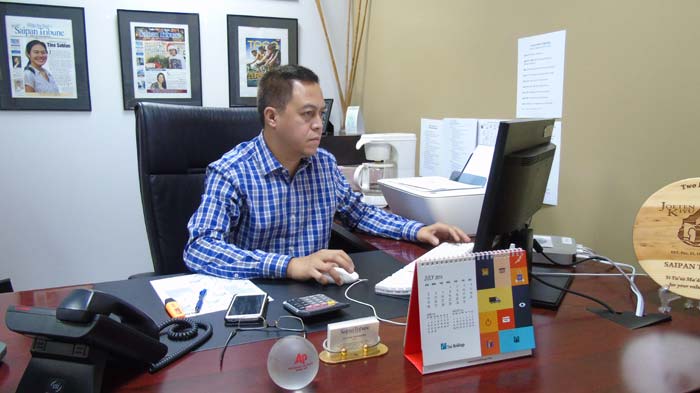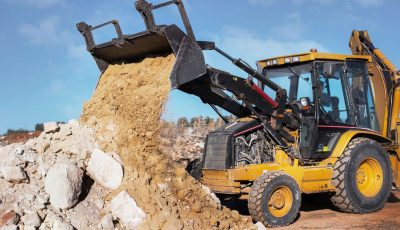Getting the news out

Jayvee Vallejrera
YoungStyle contributor Alex Megino sits down with Saipan Tribune editor Jayvee Vallejera for a question-and-answer interview:
Question: What is it like to be in a news world? How did you career begin?
Answer: Being in mass media is not just about going to the office and working eight hours. It means knowing about what is going on with the rest of the world 24 hours a day. So even at home, I monitor the news to know what will be in tomorrow’s news. As soon as I wake up, I check the news, mostly the online portals of Reuters and the Associated Press. For TV, I prefer the BBC.
I actually got started by editing my classmates’ essay homework when I was still in elementary school. They would ask me to look at their essays before submitting them to our teachers. I was hopeless at mathematics but English was more manageable. Later, I pursued journalism in college and majored in mass media.
Q: How do you filter stories? How often do you have to compromise between good news and bad news?
A: I usually filter stories according to what we call “news values” such as proximity, significance of the person involved, date, impact, etc. For example, the more people an event affects, the more important it is. Something that happened today is more important than something that happened last week. If I fall, that is not news. If President Trump falls, that is news. That means a story about Gov. Ralph Torres is more important than an event that happens to an ordinary person.
Most of the time, I don’t have to choose between good news and bad news. I can usually find space for both stories. However, when I have to choose, I am again guided by news values. In the end, I have to choose which story will be more interesting to our readers and which story will result in more people buying the newspaper.
The same holds true when evaluating which stories go on the front page and which one goes inside. News values are very useful guides.
Q: What story do you see as the most intriguing?
A: I am a fan of science news, so I am always intrigued by stories that are related to biology, the environment, genetics, astronomy, geology, and even history. However, it has been proven in studies that people are more interested in crime stories, so these kinds of stories get bigger treatment.
Q: Is there competition between Marianas Variety and Saipan Tribune?
A: Yes, there is competition. However, the CNMI is a very small place, so it cannot be avoided that both newspapers sometimes have the same stories, and sometimes even the same headline. That is only coincidence, however.
I welcome this competition between the two newspapers because it benefits the reading public. Sometimes, we have stories that the Variety does not have and sometimes they have stories that we do not have. That is information that gets out and redounds to the benefit of the public.
Q: Are there times when you and Marianas Variety share information?
A: No, we don’t. The Saipan Tribune has its own editorial team and the Variety also has its own team. The Tribune has its own reporter at the Legislature; the Variety also has its own reporter there. We are actually in competition for news stories every day. When we get an exclusive story, it is called a “scoop.”
Q: What do you think about “YoungStyle” becoming a part of the Saipan Tribune again?
A: The Saipan Tribune had a YoungStyle section many years ago but it was discontinued as the wire services where we got our stories stopped doing them. I am very happy that we have been able to revive this section of the newspaper with the generous help of Ekaterina, since it gives our young readers a voice and a forum.
Q: How do you see it beneficial to children to read and participate in “YoungStyle’s” publication?
A: The YoungStyle section is a big help to children because it will encourage them to read more and submit their drawings and other artwork. Hopefully, it will also encourage them to pursue other forms of writing, like poetry, essays, and interviews. And when children start reading at a young age, that will later help them when they go to high school and college.
Q: Is it within human power to change everyday news for better and how?
A: Most news stories emanate from human activity and we, as reporters and editors, only get our guidance from how humans around us behave. So, yes, I do believe that it is within our power to change the news. If it is for better news, it will depend on how humans around us behave. We can only report on what is going on around us and we cannot make up stories. So if the humans around us behave well, then the stories that will come out will reflect that. If they behave badly, then the stories in newspapers will also show that. To say it in another way, mass media does not exist in a vacuum. What we produce and write about will always reflect what is going on around us.
Interview By
ALEX MEGINO
TANMS Student, 8th Grade




























